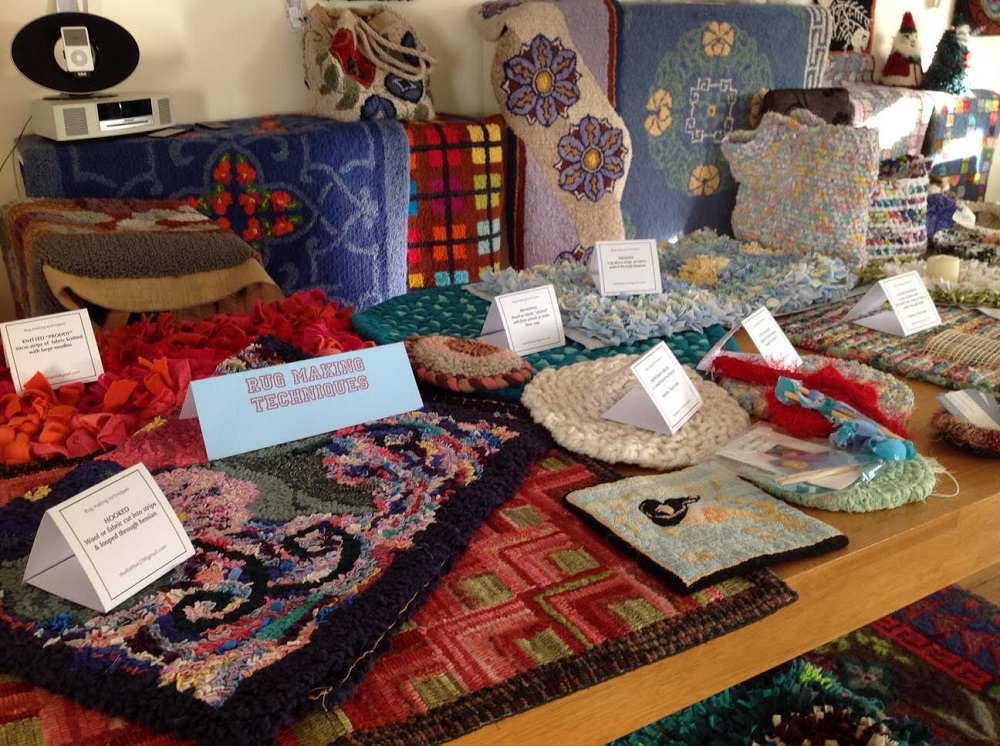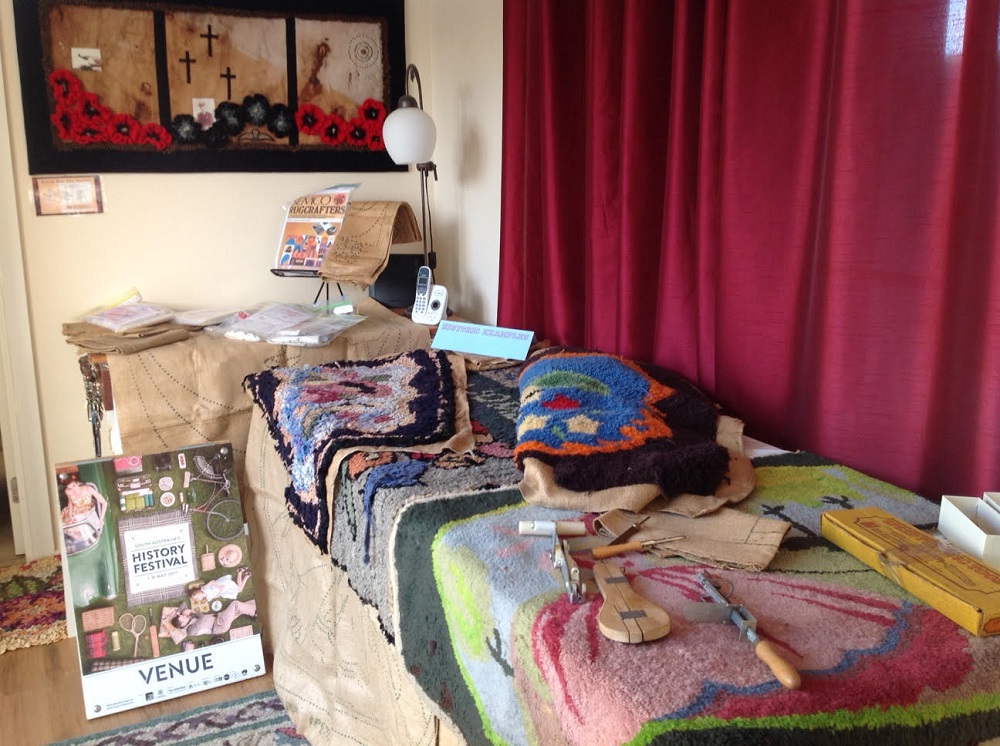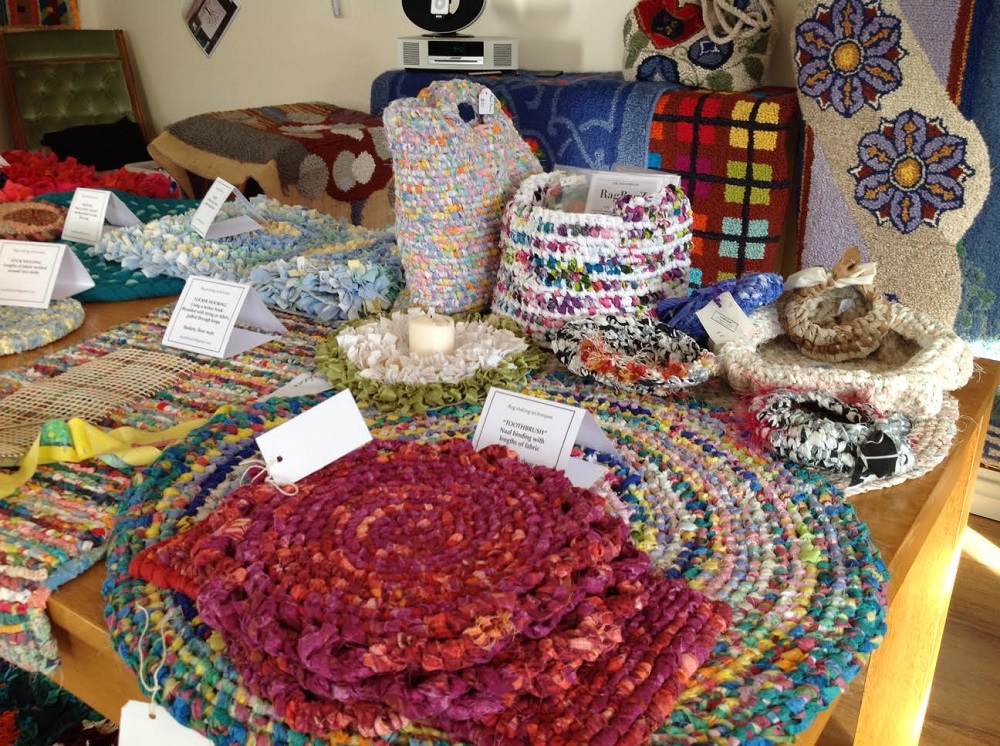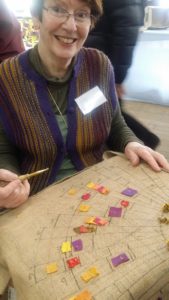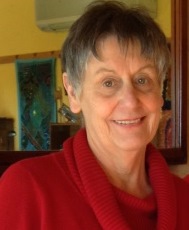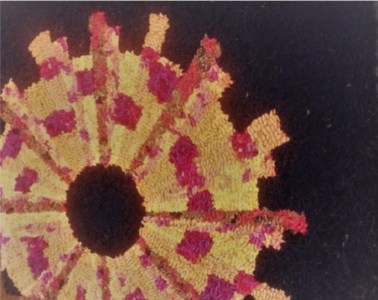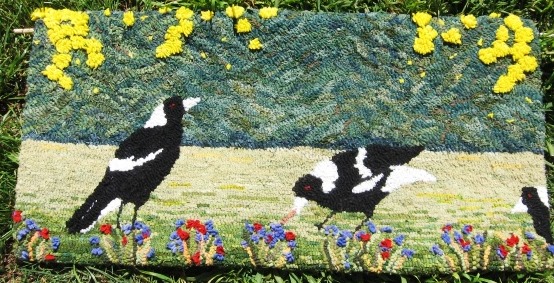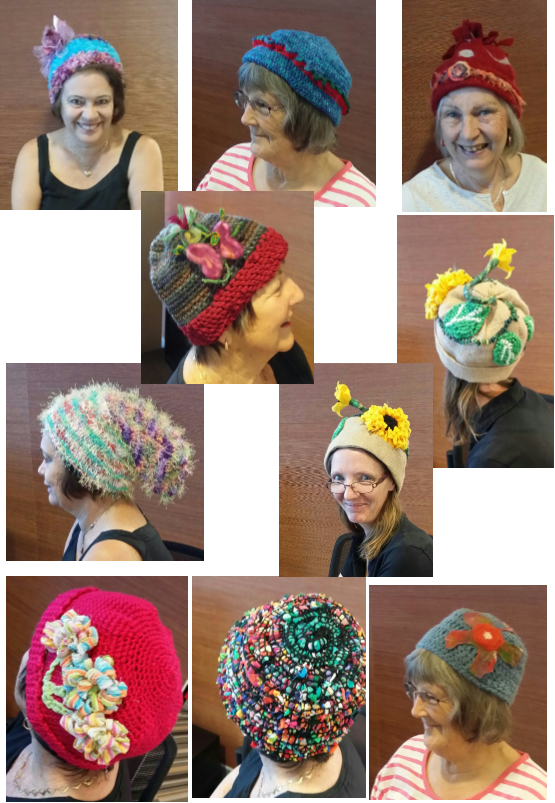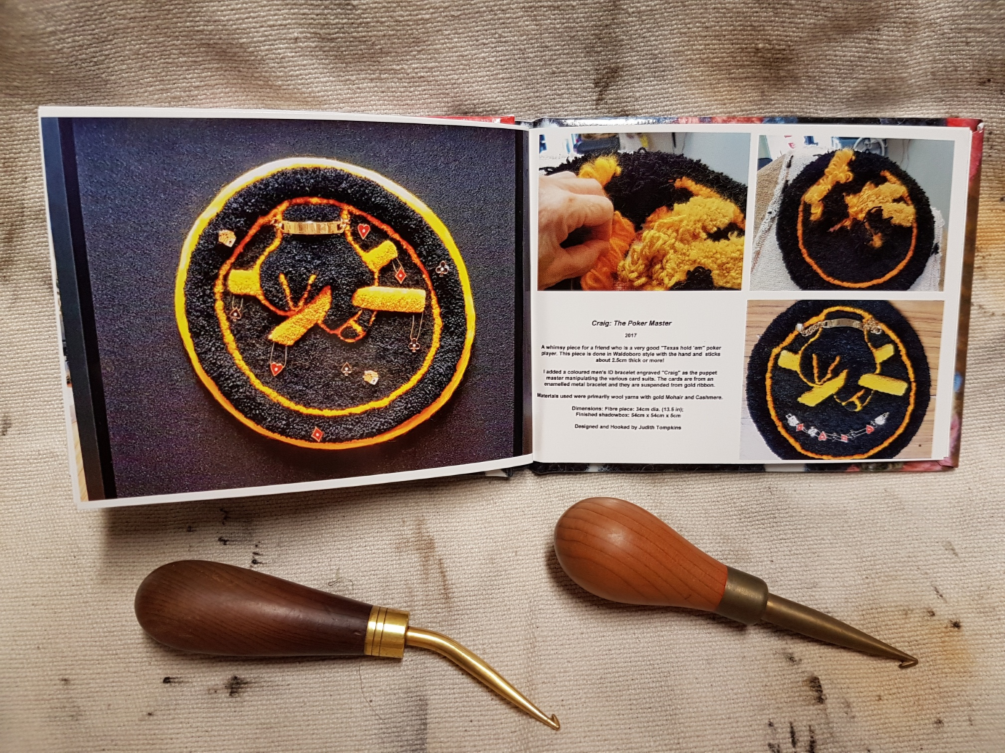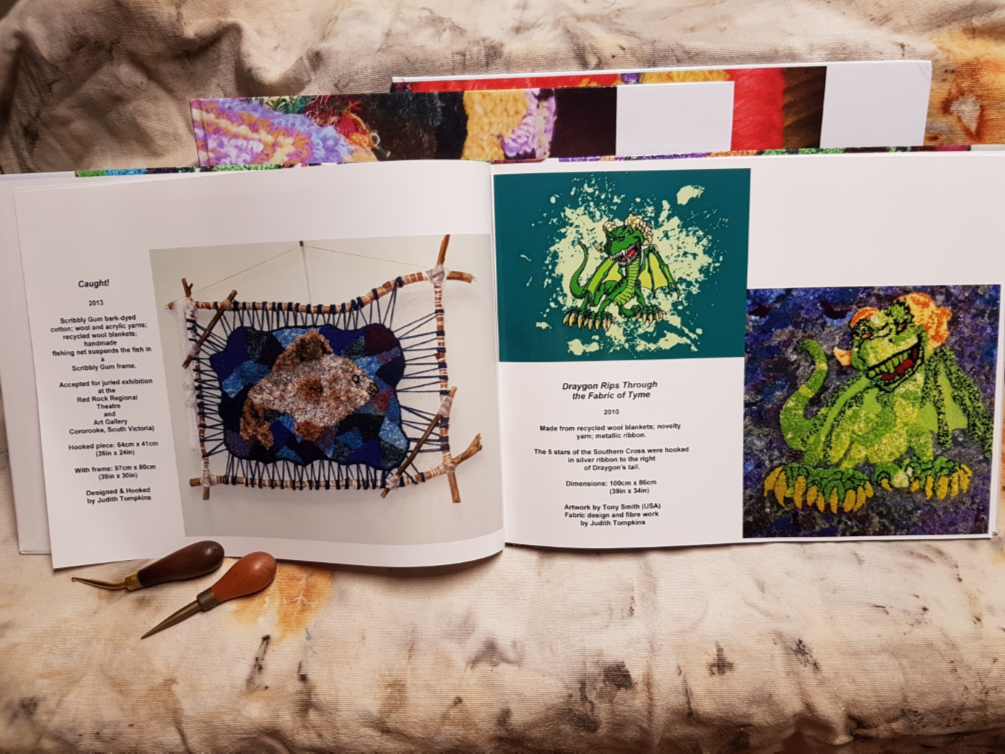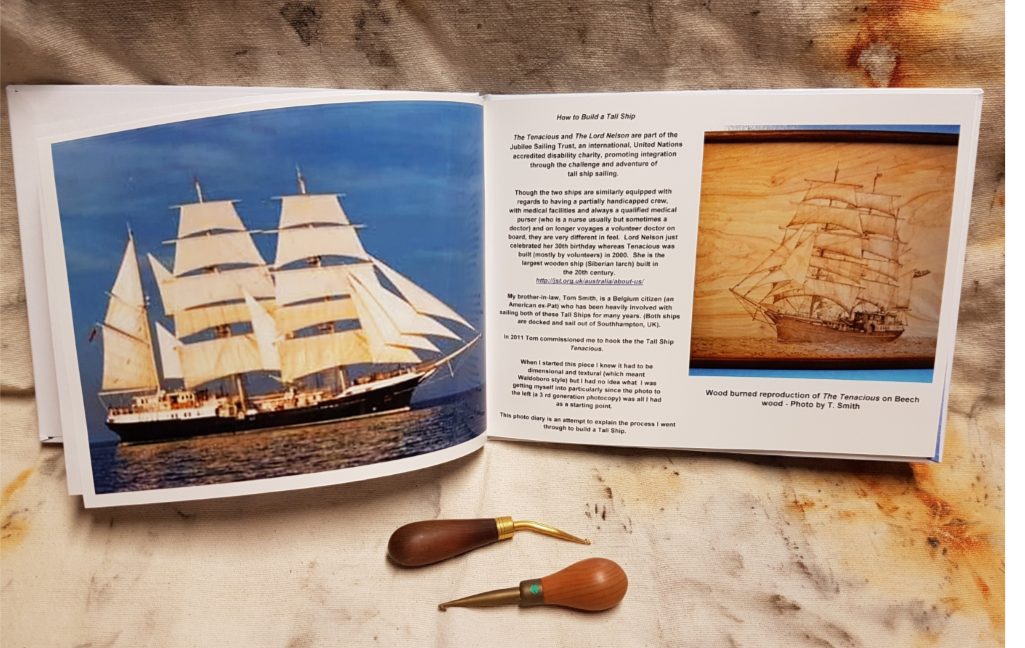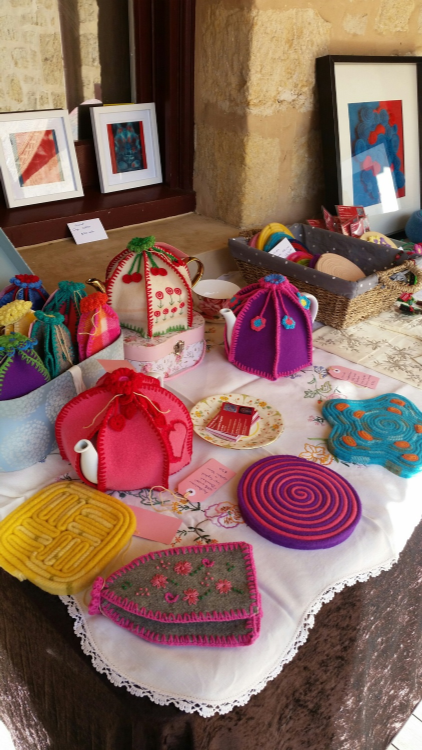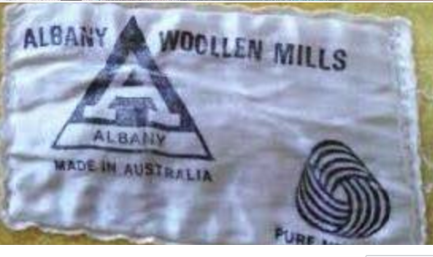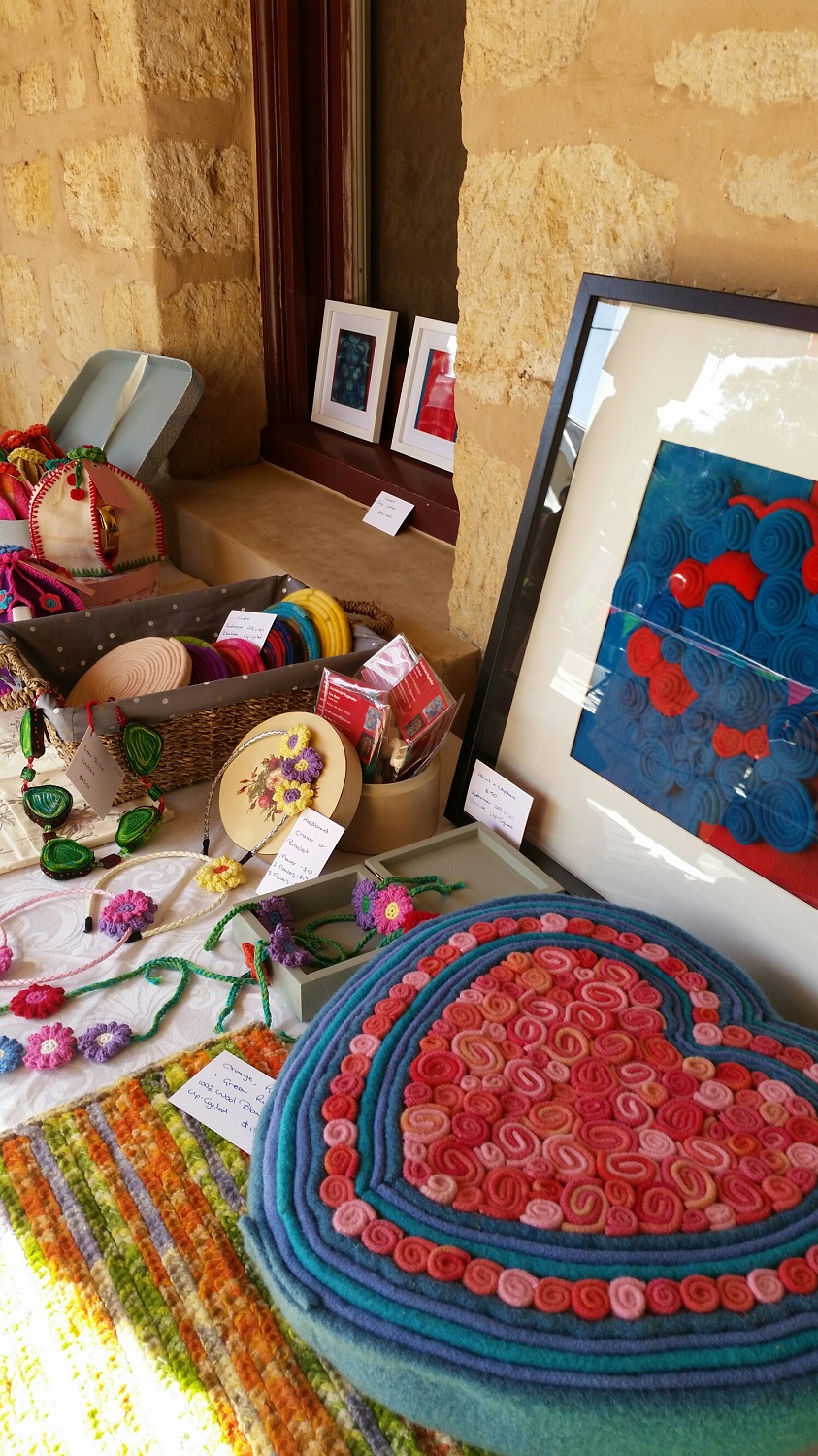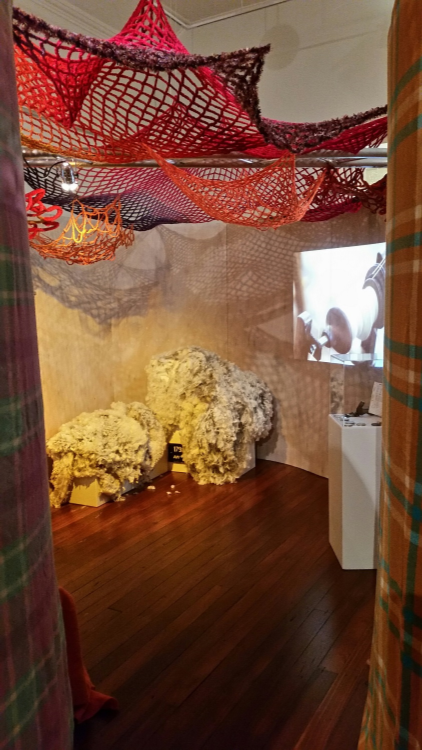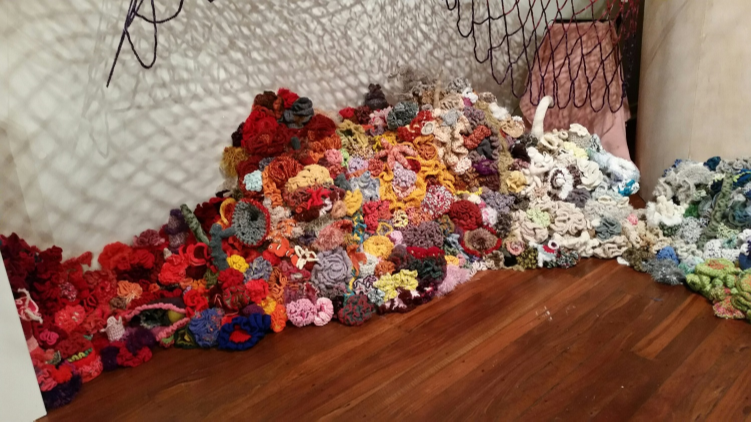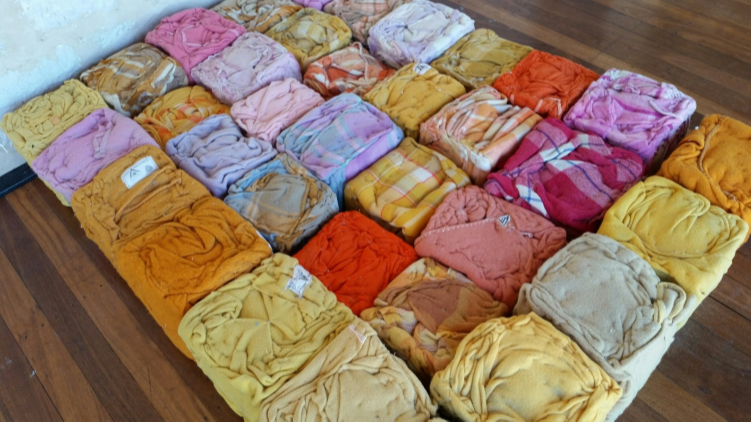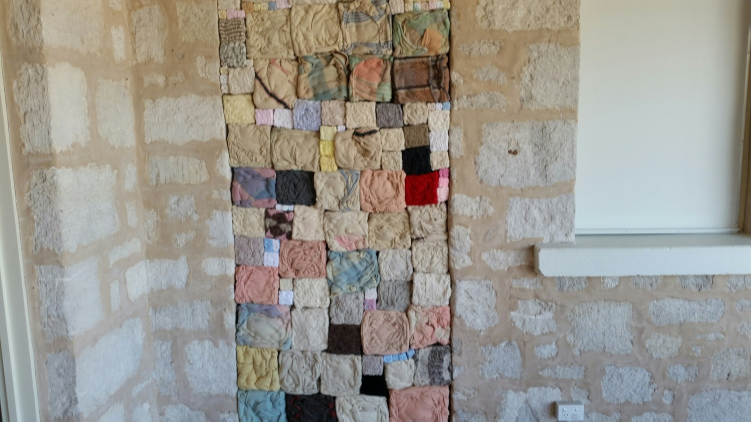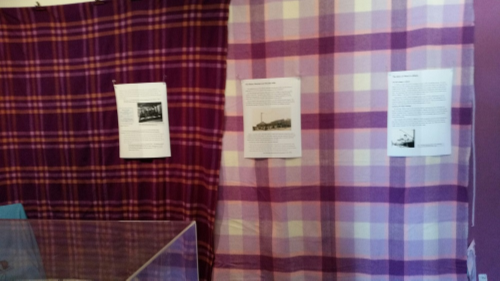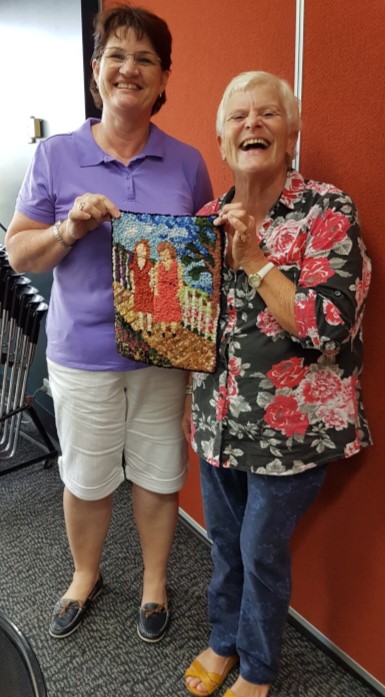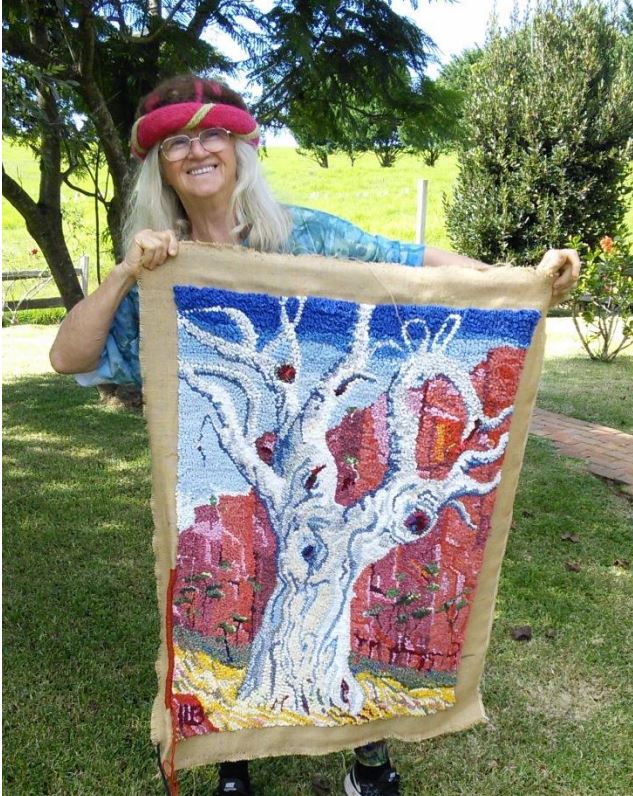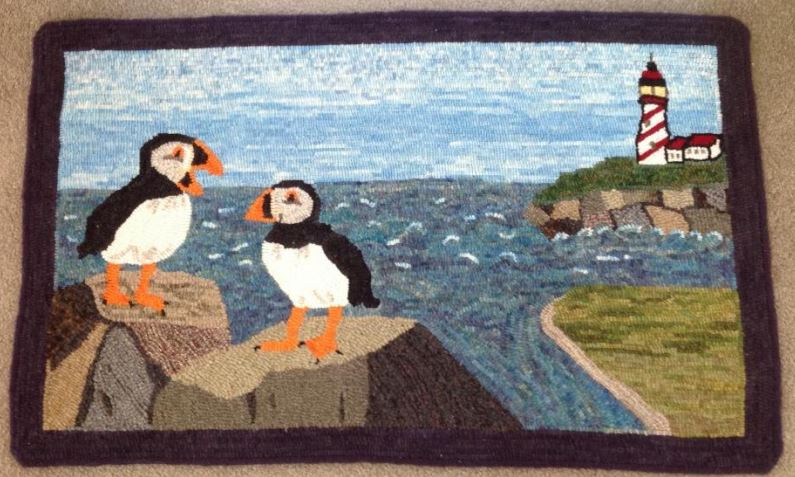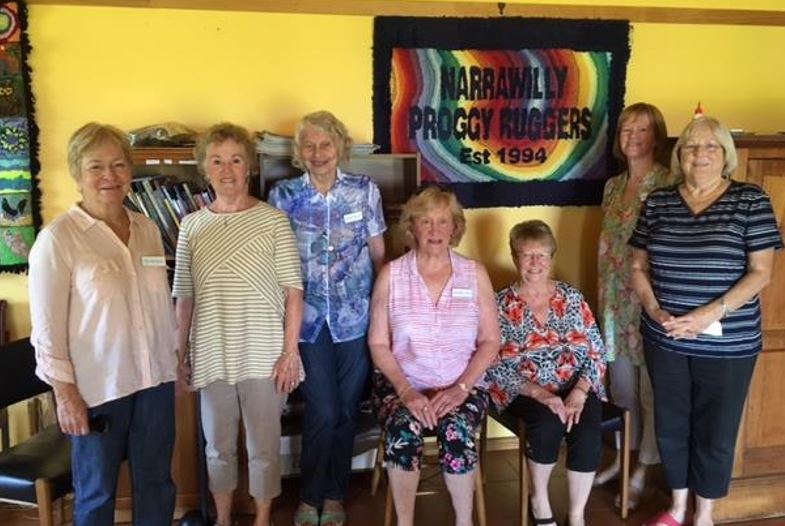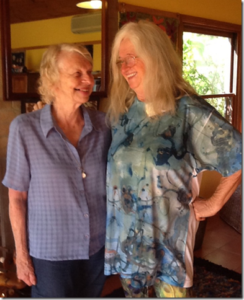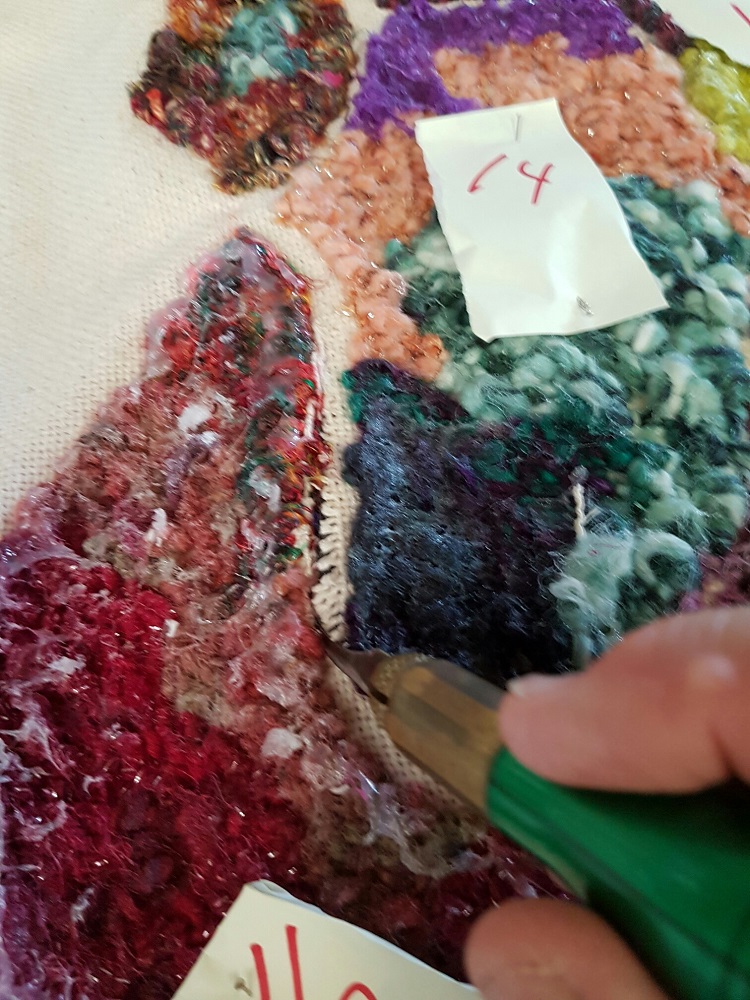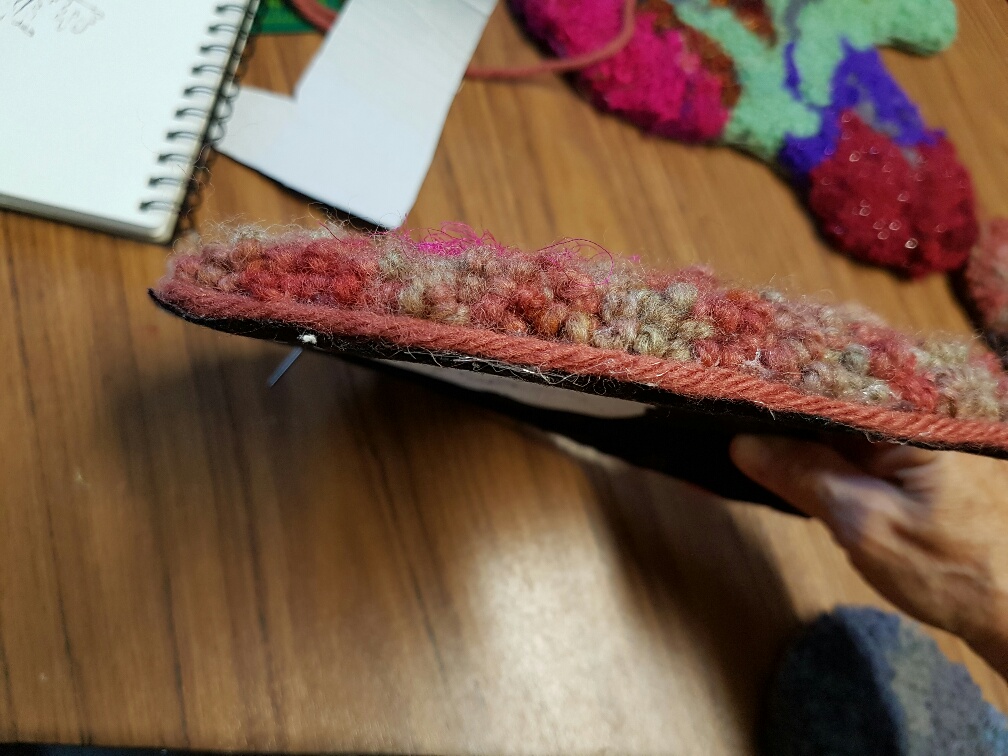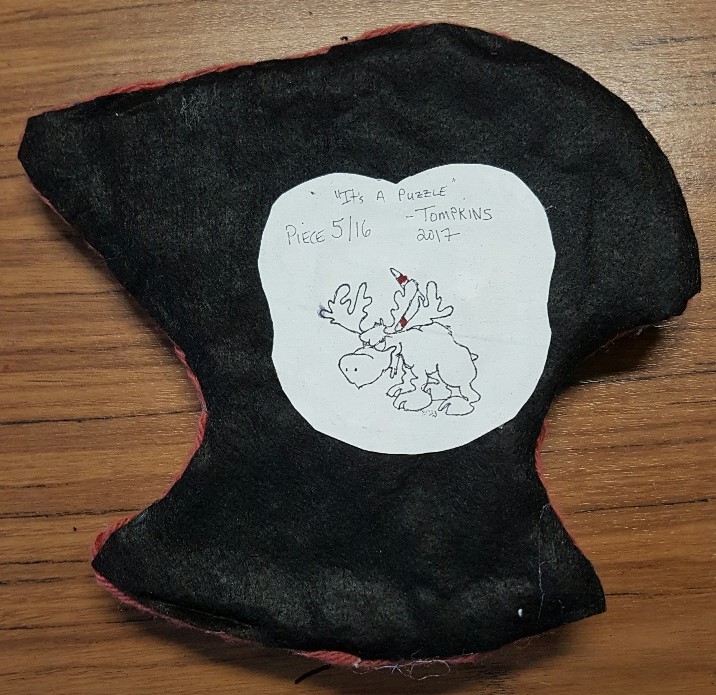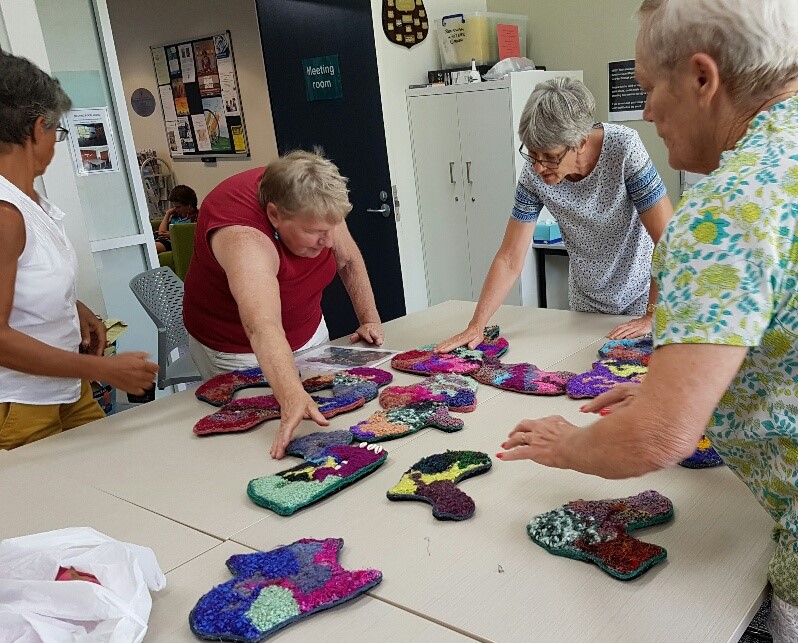ISSN 2207-001X 13th July, 2017
Although there are a huge number of books, magazines and websites catering for the creative arts community, there is no platform that broadly showcases our Australian “take” on the traditional craft of rug making. Or, how the Australian artists perspective has pushed this craft into different and challenging paths by initiating a fusion of traditional rughooking with other media and techniques.
With this in mind we would like to know how you, as a textile and fibre artists, think as you approach your works; we would like to learn how you implement techniques from other handcrafts; and we are particularly interested to hear your stories and discover what inspires, influences and motivates you to create.
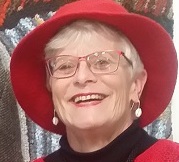
 In the first of these interviews, Jo Franco, ARG Editor, talks with Judi Tompkins, Textile Artist.
In the first of these interviews, Jo Franco, ARG Editor, talks with Judi Tompkins, Textile Artist.
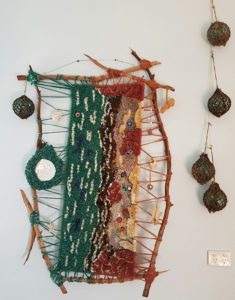
Jo: If a gallery called you, how would you describe your work?
Judi: My work derives from the traditional hooking and prodding but I have pushed both my personal boundaries as well as the limitations inherent to the traditional approach to this craft. I use a diverse range of fibre/fabric as well as “found” objects to create sometimes large 3-Dimensional, textural, embellished work that may be free-standing or unconventionally hung. About half of my pieces have been commission work and I welcome the lateral thinking challenge of tailoring a whimsical or “bespoke” piece to reflect a specific aspect of an individual or group. I love to ask “what would happen if…”?
Jo: What captures your imagination about a particular technique or approach to your work?
Judi: I love both colour and texture whether in fibre art, ceramics, photographs, film, fine art, music or wherever else I find it.


I welcome the limitations and constraints placed on design ideas by the materials, techniques, tools and timelines. I’m “fired up” by textures and design ideas that let me challenge standard conventions and perceptions. My “eureka” moments tend to result in tactile fibre pieces that incorporate 3-Dimensional aspects that often reflect a bit of “whimsy”.
At this stage, I chose techniques from the craft of rugmaking then proceeded to violate nearly every “rule” imposed by traditional rughookers. To my way of thinking, if something doesn’t make sense or work for a particular piece I will re-work the “advice” to suit my requirements.
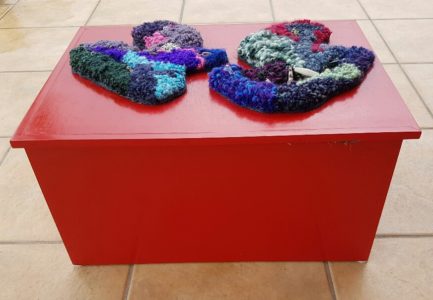
I love the meditative process of going into “the zone” while hooking and sculpting a piece. I delight in pushing the conventional boundaries and limitations of scale, shape, texture, media and technique. It’s a “good day” when I can “startle” a viewer by incorporating unexpected materials or embellishments into a piece.
The magic of this 3-D approach happens as the object or design slowly emerges from a tangle of fibre (the proverbial “dog’s breakfast”). What is revealed is even a surprise to me.
I would hope someday to challenge the art world with one of my rug hooked pieces that could sit comfortably next to a piece of ceramics or painting.
Jo: Who – or what – influenced your early work? Has your later work been influenced by the same person/style/technique?

Judi: As a child I was a collector of colourful “sparkly” rocks, driftwood and unusual buttons. My grandmother was a tailor who not only gave me buttons but made some amazing “crazy” quilts from the leftover fabrics that also found their way into her hooked and braided rugs. As an adult I became a “weekend” potter and was thoroughly beguiled by the texture, elasticity and tactile nature of the different clay bodies. Forming and shaping the fibres of 3-Dimensional pieces are reminiscent of handling, scraping and coiling clay but the material weighs much less!
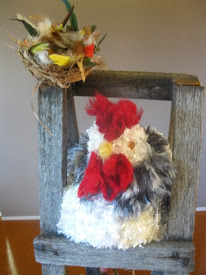 I find the sculptural aspects of rughooking both intriguing and even magical. I was drawn to rugmaking and hooking because of the recycled aspects of the craft and the basic stitches – hook and prod – were easy to learn. Since I don’t actually have 3-dimensional vision (only one working eye) I was perhaps crazy to make 3-D my preferred technique.
I find the sculptural aspects of rughooking both intriguing and even magical. I was drawn to rugmaking and hooking because of the recycled aspects of the craft and the basic stitches – hook and prod – were easy to learn. Since I don’t actually have 3-dimensional vision (only one working eye) I was perhaps crazy to make 3-D my preferred technique.
I always liked the work of Georgia O’Keefe and her use of colour, light and the juxtaposition of objects “out of place” – she says so much in a seemingly simple work. Salvador Dali and his surreal view of the world (and all who sail in her!) was pure delight!
Jo: Are you pleased with your artistic progress? What boundaries or limitations do you find are the hardest to push?
Judi: As a self-taught “hooker” I’ve surprised myself with the artistic progress I have made in the last 5 years.

The boundaries I have found hard to push have to do with the traditional approaches and techniques that I don’t regularly use so my results are often not up to my expectations. I find it immensely difficult to work “small” due in part to the types of fibre I prefer. I am a bit intimidated by some of the free-form, 3-Dimensional ideas I have in my “mind’s eye” and will simply need to “have a go” and see what happens.
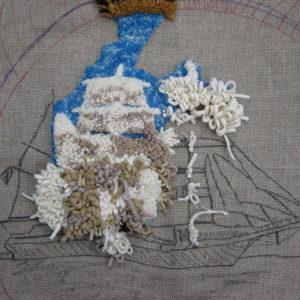
My rule of thumb is “expect the unexpected or you won’t see it”.
I find it difficult to find others interested in discussing the process used to produce 3-D or structural pieces and see that as perhaps an unintended limitation imposed by those who are committed to the tradition of rugmaking. I respect and have learned much from the traditions around this craft but I find tradition for traditions sake to be stifling.
I will continue to do my own thing and seek to find others who are also interested in “different ways of thinking and doing”.
Jo: Where do you see your work in 1 – 2 – 5 years? In other words, where do you see yourself going with your current approach and technique?
Judi: I would like to do more commission work and would particularly like to collaborate with artists working in other media.
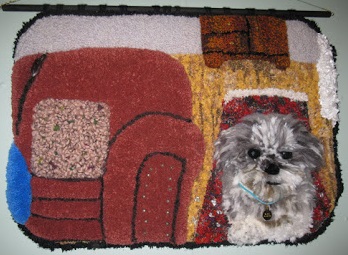
I have in mind to do some larger pieces that will incorporate other media – hopefully through collaboration. I hope to expand on the whimsy in my work and perhaps incorporate more “fibre puns”.
Most of all I want to retain my apparently “skewed” view of the world and believe that Edgar Allen Poe describes me best: “From childhood’s hour I have not been as others were; I have not seen as others saw.”
Jo: In what way do you think the techniques you currently use relate – or could relate – to other textile techniques? In other words, would you look to incorporation of other media as part of your work?
Judi: Incorporating other media – including other textile arts – appeals to me because of the potential to introduce unexpected textural surprises.

Since I no longer do any pottery or beadwork – and don’t have the hand skills for the other fine textile techniques – I would welcome an opportunity to collaborate with others who have these skills. Until I find a willing kindred artist, embellishments and “found objects” will continue to serve as my primary collaborators.
We encourage more Australian Guild members to share their rug making achievements, please email ……
We welcome your feedback on our posts so feel free to click the “comment” link below and let us know what you think! The other links will redirect you to the ARG website. (Please note you don’t need to have a WordPress blog, but you do need to register with WordPress to leave a comment)
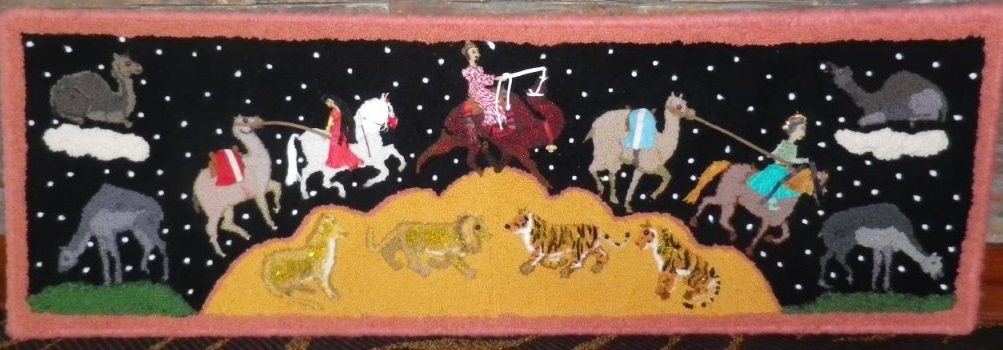


 Judy used bainia (Aran) wool, knitting and rug wool, dyed wool yarn, blanket, fabric strips and metallic thread to hook this piece.
Judy used bainia (Aran) wool, knitting and rug wool, dyed wool yarn, blanket, fabric strips and metallic thread to hook this piece.
